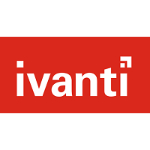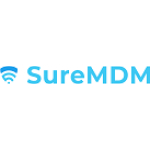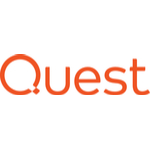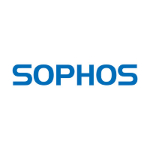TechnologyCounter provides genuine, unbiased real user reviews to help buyers make informed decisions. We may earn a referral fee when you purchase through our links, at no extra cost to you.
List of 15 Best Endpoint Management Software
Showing 1 - 15 of 21 productsNinjaOne the ultimate software solution for streamlining your daily tasks and boosting productivity. With its user-friendly interface features, NinjaOne simplifies your workflow and empowers you to achieve more in less time. Say goodbye to cluttered...Read NinjaOne Reviews
Atera is a software designed for modern businesses. With its intuitive interface and powerful features, Atera simplifies IT management and boosts productivity. Its innovative technology streamlines tasks, improves response time, and reduces downtime...Read Atera Reviews
Webroot SecureAnywhere, the ultimate antivirus software designed to protect your device from all kinds of online threats. With its advanced security features and powerful scanning capabilities, Webroot ensures your digital life is always safe and sec...Read Webroot SecureAnywhere Reviews
CrowdStrike Falcon is a solution for modern-day cybersecurity threats. With its advanced technology and unmatched capabilities, Falcon is changing the game for businesses looking to protect their valuable data from malicious attacks. Say goodbye to t...Read CrowdStrike Falcon Reviews
FortiClient is a and versatile security software designed to protect your devices and networks from cyber threats. It offers advanced features and user-friendly interface, making it a top choice for individuals and organizations alike. With FortiClie...Read FortiClient Reviews
Action1 is a software solution for streamlining and optimizing your business operations. Whether its IT management, endpoint security, patching, or compliance, Action1 has got you covered with its efficient and user-friendly features. Say goodbye to...Read Action1 Reviews
SuperOps.ai RMM is a remote monitoring and management platform designed to simplify IT operations for businesses of all sizes. It offers a user-friendly interface, robust automation capabilities security features, providing a seamless experience for...Read SuperOps.ai RMM Reviews
Ivanti is a leading software company known for providing innovative solutions to streamline and simplify IT operations. With a commitment to enhancing productivity and reducing costs, Ivanti offers a range of products that address critical business n...Read Ivanti Reviews
Hexnode is a solution for all your device management needs. From managing mobile devices to kiosks, get complete control and security with Hexnode. Say goodbye to the hassle of juggling multiple tools and say hello to a seamless, efficient management...Read Hexnode Reviews
ManageEngine Endpoint Central is an all-in-one solution for advanced endpoint management and security, giving full control to your enterprises IT team. It offers a holistic approach to endpoint administration and protection catering to the complexity...Read ManageEngine Endpoint Central Reviews
Miradore is a and versatile IT asset management software designed to simplify system management for businesses of all sizes. With its user-friendly interface and an array of features, Miradore streamlines tasks such as inventory monitoring, software...Read Miradore Reviews
SureMDM is a solution for all your mobile device management needs. With its user-friendly interface and powerful features, SureMDM ensures smooth and hassle-free management of your organizations devices. Say goodbye to complex management tools and he...Read SureMDM Reviews
KACE, is a solution for modern IT management. With its user-friendly interface features, KACE streamlines tasks and increases efficiency for your organization. Say goodbye to tedious manual processes and hello to a more streamlined and effective appr...Read KACE Reviews
Sophos is a trusted name in the world of cybersecurity, known for its efficient solutions. With a strong focus on threat prevention and data protection, Sophos offers a wide range of products and services to keep businesses and individuals safe from...Read Sophos Reviews
upKeeper is the reliable solution for simplifying and streamlining your software maintenance and updates. It takes the hassle out of managing multiple devices and ensures your system is always up to date, secure, and running smoothly. Say goodbye to...Read upKeeper Reviews
- What Is Endpoint Management Software?
- Top Reasons Why Businesses Need Endpoint Management Software?
- What Are the Top Key Features of Endpoint Management Software?
- What Are the Top Benefits of Endpoint Management Software?
- What Are the Steps to Choose the Right Endpoint Management Software?
- What Are the Types of Endpoint Management Software for Different Industries?
- What Are the Technology Trends for Best Endpoint Management Software?
- What Are the Deployment Options for Endpoint Management Software?
What Is Endpoint Management Software?
Endpoint management software refers to a category of software designed for the purpose of effectively managing various endpoints, including but not limited to computers, cellphones, tablets, medical equipment, and other interconnected devices. Endpoint monitoring tools facilitates the ability of enterprises to effectively identify, deploy, manage, and secure their endpoints through the utilization of a cohesive platform.
Additionally, it aids in the implementation of endpoint security measures, the administration of hardware and software inventories, and the monitoring of endpoint performance and health. Endpoint management tools is utilized by enterprises to facilitate the deployment of software and patches, hence ensuring the continuous updating of their endpoints.
This mitigates the necessity of dispatching information technology workers to physical premises. Endpoint management software can be utilized as an additional measure to enhance the security of endpoints, safeguarding them from potential risks posed by malicious software and cyber-attacks.
Furthermore, this software can be utilized by system administrators to remotely identify and eliminate information technology security concerns in their endpoints. In general, best endpoint management software facilitates the maintenance of connected devices within businesses, ensuring their currency, security, functionality, and administration.
Managing a substantial quantity of endpoints across diverse platforms and geographical regions can be efficiently accomplished with this approach.
Top Reasons Why Businesses Need Endpoint Management Software?
1. Enhanced Security: Endpoint management tools plays a crucial role in safeguarding computer networks from cyber attacks and unauthorized data access, hence constituting a vital component for businesses.
2. Increased Productivity: Endpoint management software has the capability to automate various processes and minimize periods of system unavailability, hence enhancing the productivity of personnel.
3. Remote Monitoring and Troubleshooting: Endpoint monitoring tools are capable of effectively managing and resolving issues related to IT assets, regardless of the geographical location. This capability leads to significant time and cost savings.
4. Easier Asset Tracking: Endpoint management software is a valuable tool for organizations in effectively monitoring and managing their IT assets, encompassing devices, software licenses, and software versions.
5. Improved Compliance: Endpoint management solutions play a crucial role in assisting organizations in maintaining compliance with regulatory obligations.
6. Reduced Costs: The utilization of best endpoint management software has the potential to decrease expenses through the automation of procedures and the prevention of superfluous expenditures.
7. Increased Visibility: Endpoint management systems offer a comprehensive analysis of network activities and IT operations, facilitating well-informed decision-making.
8. Streamlined IT Operations: Endpoint management solutions have the potential to enhance IT operations through the facilitation of management chores, resulting in increased efficiency.
9. Improved End-User Experience: Endpoint management software has the potential to enhance user experience by enabling users to conveniently access programs and resources across various devices.
10. Integration: Integration of endpoint management solutions with a wide range of pre-existing systems and applications is feasible.
11. Automation: Endpoint management software has the capability to automate a range of IT processes, including patching and updating, resulting in time and effort savings.
12. Easy Accessibility: Endpoint management systems have the capability to be accessible from a wide range of devices, regardless of the time.
13. Improved Security Auditing: Endpoint security management software plays a crucial role in enabling organizations to remain current with the most recent security protocols and conduct routine security audits.
14. Scalability: The scalability of top endpoint management software allows for adaptation to the evolving requirements of an organization.
15. Customisation: Endpoint management systems have the capability to be tailored in order to align with the specific needs and preferences of an organization.
What Are the Top Key Features of Endpoint Management Software?
1. Remote Monitoring and Management: Endpoint management software facilitates the remote monitoring and control of the status and configuration of endpoints, including user accounts, using a centralized cloud portal.
2. Security and Access Control: Endpoint management tools offer a comprehensive range of security functionalities, including sophisticated user authentication and authorization mechanisms, as well as effective identity and access control measures. The incorporation of these elements can effectively safeguard the various components of a system against potential harmful attacks and illegal access.
3. Software Distribution and Management: Endpoint management software is capable of automating the process of deploying and managing system software and updates. This functionality ensures that users remain secure, compliant, and consistently up-to-date.
4. Asset Tracking: Endpoint monitoring tools are capable of monitoring, tracking, and analyzing a wide range of system components, including hardware, software, and user accounts. This functionality is utilized for the goals of asset management and optimization.
5. Automated Troubleshooting: Endpoint management tools are specifically designed to continually monitor the activities of a system and promptly and effectively identify and handle any potential issues.
6. Data Backup and Restore: The best endpoint management software possesses the capability to effectively execute the process of backing up and restoring data on endpoints, hence safeguarding and preserving critical data in a centralized location.
What Are the Top Benefits of Endpoint Management Software?
1. Improved security: Endpoint management software enhances network security by actively monitoring all endpoint devices inside a network for potential security risks and vulnerabilities, including but not limited to malware, viruses, and other forms of malicious activity.
2. Automated patch management: Endpoint management tools are designed to automate the deployment of patches to endpoints at regular intervals, hence mitigating the necessity for manual patch deployment and diminishing the vulnerability to known exploits.
3. Improved visibility: Endpoint monitoring software offers comprehensive network visibility, enabling IT workers to exercise authority over the endpoints that are linked to the network. Enhanced visibility can contribute to the fast and successful implementation of network security measures.
4. Improved compliance: Endpoint monitoring tools facilitate the expeditious attainment of industry compliance standards for enterprises by guaranteeing the secure configuration and consistent management of endpoint devices.
5. Device management: The endpoint management system streamlines the process of device deployment, provisioning, and management through the implementation of an automated system for device enrollment, setup, and reporting.
6. Data loss prevention: The best endpoint management software enables IT professionals to proactively mitigate the risk of data leakage, encompassing the unauthorized disclosure of sensitive information such as confidential files or passwords.
This is achieved through the implementation of comprehensive data management rules, robust security controls, and tailored configurations on endpoint devices.
7. Optimized resource utilization: Endpoint management software enhances the efficiency of IT resource management through the automation of many operations, including software installations, patching, and application administration. Consequently, this process aids in the optimization of resource usage and the reduction of expenses.
What Are the Steps to Choose the Right Endpoint Management Software?
1. Identify Your Needs & Requirements: Begin by assessing the magnitude and extent of your organization's existing and prospective requirements for top endpoint management tools.
One should engage in self-inquiry by posing questions such as, which gadgets necessitate management? What are the necessary system and network security measures that must be implemented? What are the necessary remote access features?
2. Research Potential Solutions: Compile a comprehensive inventory of prospective endpoint management solutions and do thorough investigations on each alternative.
Please take into account pertinent characteristics, such as comprehensive reporting throughout the entire organization, automatic deployment of software, well-developed administration of mobile devices, and more factors. The evaluation of customer and industry group feedback is conducted to ascertain the level of excellence in the product.
3. Prepare a Demo: After the process of narrowing down the options to one or two endpoint management solutions, it is advisable to initiate contact with the respective provider and request a demonstration. It is imperative to ensure that comprehensive information regarding the capabilities of the solution is provided.
4. Establish Your Budget: Prior to acquiring the endpoint management software, it is advisable to establish a budget that aligns with the specific requirements of your organization.
It is important to take into account the initial expenditure associated with the procurement and implementation of the solution, with any supplementary costs related to training and support.
5. Evaluate the Quality of Support: The provision of high-quality customer service is of utmost importance in the utilization of the best endpoint management software. Determine the nature of the customer support services provided, encompassing the available communication channels and the designated operational hours for seeking assistance.
6. Select and Install Endpoint Management Software: After careful consideration of all the aforementioned criteria, one is now prepared to make the ultimate choice. After the installation of the solution, it is imperative to ensure that it is configured appropriately in order to align with your requirements and commence the accrual of associated advantages.
What Are the Types of Endpoint Management Software for Different Industries?
Endpoint management software is utilized across diverse industries to enhance operational efficiency and bolster security measures.
The categorization of endpoint management tools may vary among industries; nonetheless, in a broad sense, the four primary classifications of best endpoint management software are as follows:
1. Network Management: This particular program facilitates the centralized management of networks. This feature enables enterprises to rapidly expand their operations, effectively administer and customize regulations, and exercise centralized control over their networks.
2. Asset Management: Asset management software facilitates the monitoring and administration of hardware, software, and other resources employed inside an organization. This particular program enables enterprises to effectively oversee their information technology infrastructure and safeguard it against any security breaches.
3. Security Management: Security management software offers comprehensive safeguards for various network devices, encompassing laptops, tablets, and smartphones. The aforementioned program serves the purpose of safeguarding computer systems from viruses, malware, and several other forms of dangerous threats.
4. Mobile Device Management: Mobile device management (MDM) software facilitates the administration and safeguarding of the devices utilized by employees within commercial organizations.
Mobile Device Management (MDM) software facilitates the implementation of applications, rules, and security protocols on employee devices, while also enabling remote monitoring and control of access.
What Are the Technology Trends for Best Endpoint Management Software?
There are several current technology trends associated with best endpoint management software, including:
1. Utilization: The utilization of cloud-based technologies in endpoint management software is gaining popularity due to its ability to enable remote access to computer systems, cost-effectiveness, and reduction in hardware and maintenance expenses.
2. Automation: The integration of automation has emerged as a crucial component within the realm of efficient endpoint monitoring tools. Automation plays a crucial role in enhancing system administration efficiency by minimizing the need for human operations involved in maintaining system health and security.
3. Artificial Intelligence (AI): The integration of artificial intelligence (AI) into best endpoint management software is seeing a growing trend, mostly driven by the desire to enhance security measures and optimize performance outcomes. Artificial intelligence (AI)-based solutions enable software to autonomously acquire knowledge and implement remedial measures in response to sophisticated security threats.
4. Segmentation: Endpoint segmentation plays a crucial role in mitigating the potential risks associated with attacks and the unauthorized acquisition of information. Segmentation allows endpoint management software to more effectively address the unique requirements of individual users or departments.
5. Increased secure data access and protection: The significance of data access and protection is steadily growing. The functionality of endpoint monitoring software should encompass the secure provision of access to designated users and the safeguarding of corporate data against cyber threats.
What Are the Deployment Options for Endpoint Management Software?
The available deployment choices for endpoint management software encompass on-premises, cloud-based, and hybrid deployments. The term "on-premises" denotes that the software is deployed and administered within the customer's exclusive data center.
Cloud-based deployments refer to the practice of executing software applications within a publicly accessible cloud infrastructure, such as Amazon Web Services (AWS) or Microsoft Azure. Hybrid implementations refer to the utilization of both on-site and cloud-based infrastructure for operating software.
Irrespective of the chosen method of implementation, it is customary for the customer to maintain complete authority over the system and assume the responsibility for its establishment, arrangement, and safeguarding.















